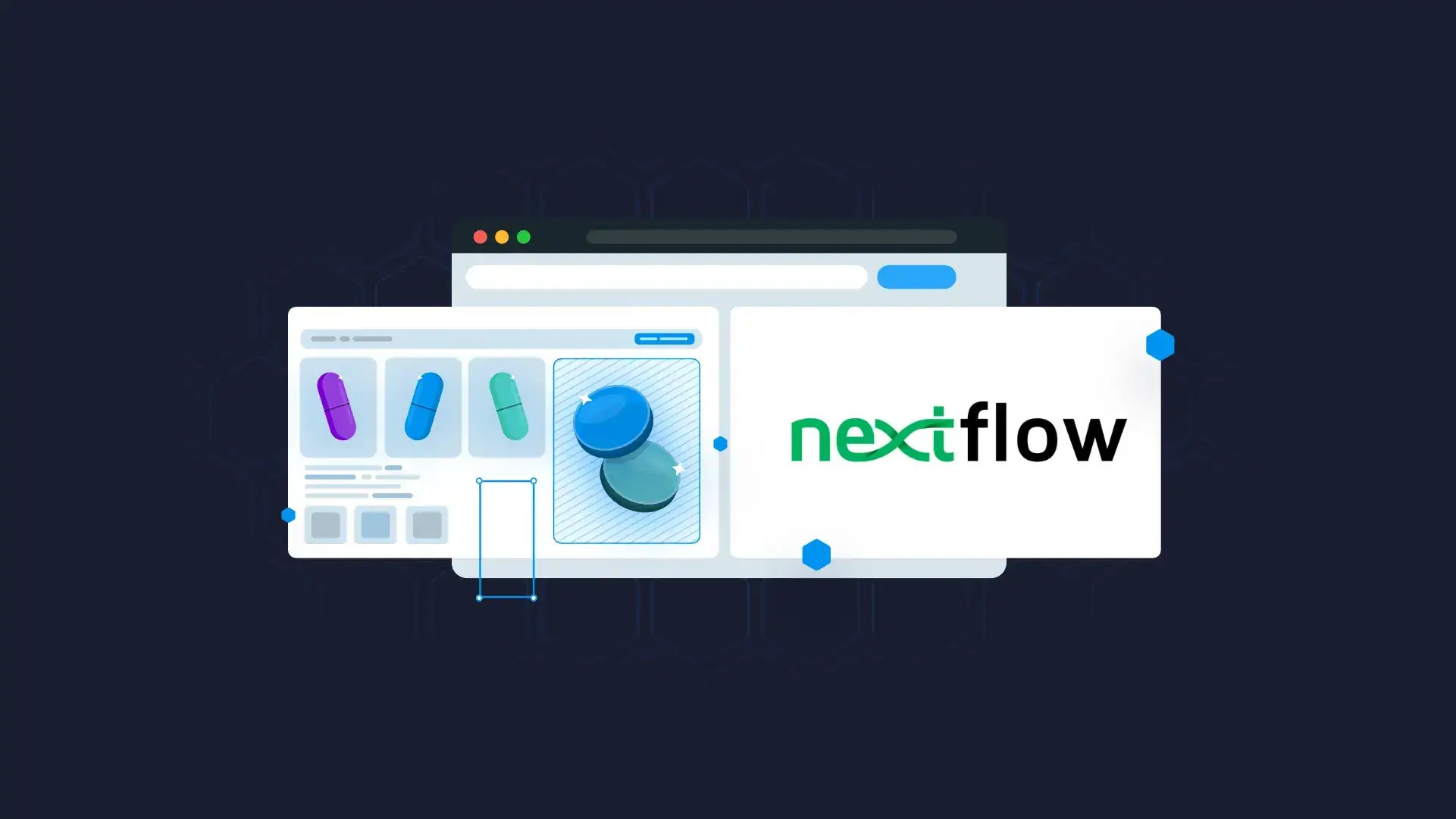
Unlocking Efficiency in Computational Biology: How Nextflow Streamlines Workflow Management
Efficiently handling complex workflows is crucial in computational biology, going beyond necessity to become a competitive differentiator. As professionals in this dynamic field, you’re likely familiar with the challenges: integrating diverse data sources, ensuring reproducibility, and scaling operations efficiently.
Enter Nextflow, a robust solution designed to simplify and streamline these intricate processes. If you’ve heard of Nextflow but are still pondering its practical benefits for your team, you’re in the right place.
In this article, we’ll delve into how Nextflow not only resolves common workflow challenges but also brings a new level of efficiency and innovation to your computational biology projects. Whether you’re grappling with data-intensive tasks or looking for a more cohesive approach to managing your pipelines, Nextflow stands out as a transformative tool in the realm of bioinformatics.
Summary
- Discover how Nextflow revolutionizes workflow management in computational biology, offering seamless integration, scalability, and enhanced security.
- Learn how its collaboration-friendly features, combined with Appsilon’s expertise in RShiny dashboards, can elevate your bioinformatics projects.
- This article explores Nextflow’s key advantages and its synergy with RShiny, providing a comprehensive guide for teams seeking to streamline their computational workflows and stay ahead in a rapidly evolving field.
- Join us in unlocking the full potential of your data and workflows with Nextflow and Appsilon’s specialized services.
Table of Contents
- Nextflow in Simple Terms
- Advantages of Nextflow for Your Team
- Nextflow and RShiny – A Powerful Combination
- Why Nextflow Matters for Your Organization
- Conclusion
Understanding Nextflow in Simple Terms
At its core, Nextflow is like a skilled conductor orchestrating a complex symphony of data and processes. It’s designed to handle the multifaceted and often cumbersome computational pipelines that are typical in computational biology. Imagine each part of your data analysis process as a musician in an orchestra. Just as a conductor seamlessly integrates the various sounds to create a harmonious symphony, Nextflow synchronizes different stages of data processing, ensuring they work in concert.
This is achieved without getting bogged down in the technicalities of the underlying computing infrastructure. What does this mean for your team? It means that Nextflow allows you to focus on the science, not the system. You can develop, deploy, and scale your computational workflows with unprecedented ease, regardless of whether they’re running on a local laptop or a cloud-based high-performance computing environment. This flexibility and simplicity are what set Nextflow apart, making it an invaluable tool in the ever-evolving field of computational biology.
Curious About the Impact of Machine Learning on Life Sciences? Explore the Power of Shiny Applications.
Key Advantages of Nextflow for Your Team
Nextflow presents a suite of advantages tailored to meet the unique demands of computational biology. Firstly, let’s talk about interoperability and scalability. In a field where data and tools are as diverse as the biological questions being answered, Nextflow stands out for its ability to seamlessly integrate with various computational infrastructures. Whether your team is working on a local server or leveraging cloud platforms like AWS or Azure, Nextflow ensures a smooth transition of workflows. This adaptability means your team can scale operations up or down with ease, depending on the project’s needs, without the hassle of reconfiguring the entire workflow.
Then there’s security and reproducibility, two pillars of paramount importance in research and development. Nextflow’s support for containerization technologies like Docker and Singularity not only bolsters security but also guarantees that every step of your computational process can be reproduced accurately, an essential aspect in scientific endeavors. This feature ensures that results are reliable and verifiable, a crucial requirement in the field of bioinformatics.
Nextflow’s ease of use and collaborative capabilities are central to its appeal for teams at varying skill levels. One of the standout features of Nextflow is its use of plain text files for pipeline definitions; all version-controlled using Git. This approach makes collaboration effortless and transparent. Team members can easily track changes, review code, and share updates, fostering a highly collaborative and efficient environment. This Git-based workflow is a boon for teams accustomed to modern software development practices, seamlessly integrating with their existing tools and processes. On top of that, there’s the Visual Studio Code extension with syntax highlighting and code snippets that only increase the buy-in from the researcher’s team.
Nextflow and RShiny – A Powerful Combination
The integration of Nextflow with RShiny opens up a new realm of possibilities for computational biology. Appsilon, with its strong foothold in developing RShiny dashboards, recognizes the transformative potential of this combination. RShiny’s interactive and user-friendly interface, when paired with Nextflow’s robust data-handling capabilities, creates an unparalleled synergy.
Imagine being able to monitor your data pipelines in real-time through intuitive dashboards, or effortlessly managing complex workflows with a few clicks. This integration is not just about simplification; it’s about empowering your team to make informed decisions quickly and accurately.
While the Seqera Platform (formerly Nextflow Tower) excels in workflow management, offering robust monitoring, logging, and scheduling capabilities, it may not be the ideal solution for every organization. Some may prefer the customized approach of a business-focused RShiny dashboard that not only tracks and modifies workflows, but also presents extensive data visualization.
Consider a scenario in which your team is working on a large-scale genomic analysis. Nextflow efficiently manages data processing and pipeline orchestration, while you leverage RShiny or Quarto dashboards to dynamically visualize both final and intermediate results, integrating them with other data sources for a holistic view. This setup also allows for on-the-fly parameter adjustments and re-initiation of experiments directly from the dashboard.
The result? Reduced time spent interpreting logs and more time devoted to deriving actionable insights. In an industry where time and accuracy are of the essence, this powerful combination can be a game-changer, enhancing your team’s capacity to innovate and achieve results with unprecedented efficiency.
Want to Make the Most of Your Life Science Data? Have You Considered Using Parquet? Explore Its Potential in this Article.
Why Nextflow Matters for Your Organization
Adopting Nextflow, whether for computational biology or a myriad of other data-driven workflows, is more than keeping pace with technological advancements; it’s about taking a strategic leap forward. Nextflow’s user-friendly interface caters to the needs of a diverse team, making it an ideal choice for managing complex, data-intensive workflows.
This accessibility ensures that all team members, regardless of their technical background, can contribute effectively to the project. Furthermore, in a field that is rapidly evolving, staying ahead of the curve is crucial. Nextflow positions your organization at the forefront of innovation, enabling you to harness the latest computational techniques and tools with ease.
Moreover, the adoption of Nextflow aligns with the broader market trends in bioinformatics. Its growing popularity and the increasing prevalence of Nextflow skills in the job market can positively influence your hiring strategies, equipping your organization with a future-proof workforce. The strategic benefits of adopting Nextflow extend beyond immediate project efficiencies; they contribute to the long-term growth and competitive edge of your organization.
By embracing Nextflow, your team not only enhances its current workflow efficiency but also sets a foundation for continuous innovation and leadership in the dynamic landscape of computational biology.
Conclusion
At Appsilon, we’ve established robust expertise in developing RShiny dashboards, particularly in the life sciences sector. Recognizing the transformative impact of Nextflow, we’re expanding our repertoire to include Nextflow, offering comprehensive solutions that cater to the complex demands of computational workloads. Our commitment is to empower your organization with the tools and expertise necessary to navigate the intricacies of bioinformatics workflows efficiently.
We invite you to explore the potential of Nextflow for your computational biology needs. Whether you’re looking to streamline existing processes, enhance the scalability of your operations, or simply looking for a more comprehensive and intuitive platform to manage your data processing, Nextflow, in conjunction with our RShiny dashboard expertise, offers a powerful, user-friendly solution.
We encourage you to reach out to us for a detailed discussion on how we can help transform or improve your computational platform and propel your projects to new heights of efficiency and innovation. Embrace the future of computational biology with Nextflow and the expert support of Appsilon.

